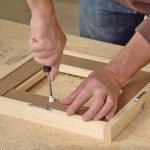Removing blinds can seem like a simple task, yet it often requires a good understanding of how the specific type mounte and the necessary precautions to avoid damage or injury. This comprehensive guide aims to provide you with insights into safely removing your window blinds, covering various types, tools needed, safety tips, and a detailed step-by-step removal process.
Understanding Your Blinds
Before diving into the removal process, it’s crucial to understand the type of blinds you have. Blinds generally fall into two categories: horizontal and vertical. Horizontal blinds are typically made of wood, aluminum, or faux wood and mount at the top of the window. Vertical blinds, on the other hand, have slats that hang from a track system and often use for sliding glass doors. Each type has its own mounting mechanisms, which can include brackets, clips, or screws.
By identifying the type, you can gather insights on how they secure in place and what tools might be necessary for removal. For example, horizontal blinds often have brackets that require a simple lifting motion to detach, while vertical blinds might need you to slide the slats off the track before removing the entire headsail. Understanding this can save you time and remove the risk of damaging the blinds or your window frame.

Gathering the Necessary Tools
Once you have identified your blinds, it’s time to gather the necessary tools for removal. Depending on your blinds, you might need several conventional tools: a screwdriver (flathead or Phillips), a drill, pliers, and possibly a ladder if the blinds are installed high up. You might also consider safety gloves and goggles to protect against sharp edges or falling debris. If your blinds have any decorative elements, such as finials or chains, keep these secure so that they won’t get lost during the removal process.
Having these tools on hand will make the removal process smoother and more efficient. It’s often wise to prepare a designated workspace where you’ll lay out the removed blinds. This will also allow you to assess any damage or plan for maintenance and cleaning before you reinstall new ones or decide to keep your windows bare.
Safety Precautions Before You Start
Safety should always come first, especially when dealing with tools and the potential risk of falling objects. If your blinds are located near high windows, make sure to use a sturdy ladder and have a second person hold it to prevent wobbling. Wear protective glasses to shield your eyes from dust or small debris, and gloves to protect your hands from sharp edges and potential pinch points.
Turn off any window covering motors and unplug them if applicable. If you’re using power tools, ensure that you are in a well-ventilated area and are using the tools according to the manufacturer’s instructions. If you feel uncertain about any aspect of the removal process, consider consulting with a professional or friend who has experience. Taking these precautions not only maximizes your safety but also minimizes the risk of damaging your blinds or window frame during the process.
Step 1: Measuring and Assessing the Installation
Before removing your blinds, thoroughly assess how they install. Measure the window frame to understand where the screws and brackets typically mounting. Often, these are located inside the window frame, on the sides, or above the casing. Taking measurements allows you to be more strategic in your approach and can help you in the future if you plan to reinstall the same or similar blinds. Make a note of where all the fasteners are, as this will simplify the reinstallation process if needed.
Look for any unique features that your specific blinds may have; for example, some corded blinds come with a safety mechanism that you must disengage before removal. Take your time assessing every aspect of the installation to prevent oversight during the actual removal process. Remember, the devil is in the details, and having a clear game plan will make the task much more manageable.

Step 2: Removing any Decorative Elements
Many blinds come with decorative elements designed to enhance their aesthetic appeal. Before proceeding with the core removal, take a moment to detach any valances, decorative hooks, or end caps. These items usually come off easily and will not require tools unless they specifically Mount with screws. Carefully inspect how each part secure; some might simply slide off, while others may require unscrewing or releasing a clip.
Storing these elements in a safe container will prevent them from being lost during the blind removal process. If you’re considering reusing any of these decorative elements with new blinds, ensure they are clean and damage-free when removing them. This initial step can significantly streamline the process, as you’ll be left with just the main operational components of the blinds to focus on.
Step 3: Detaching the Headrail
Once decorative elements remove, you can move onto the main body of the blinds, starting with the headrail. For horizontal blinds, this usually involves lifting the headrail upward and pulling it out of the brackets. Many headrails design for easy removal. Simply check to see if there are any screws holding the headrail in place; if there are, use your screwdriver to remove them before lifting and sliding the headrail.
Vertical blinds often have a slightly different process, as you’ll need to tilt the slats before sliding the headrail off the mounting track. This is typically done by twisting or lifting the slats at a slight angle to release them from the clamps or hooks. If the headrail is stubborn or appears stuck, inspect for any obstructions or screws that might have been missed. Exercise caution to avoid any damage or injury while performing this step, as the weight of the headrail can vary significantly based on material and size.

Step 4: Removing the Slats
With the headrail detached, the next step focuses on the slats themselves. For horizontal blinds, you’ll need to unclip or unhook each individual slat before removing them. This can be a tedious process, especially if the blinds are large, but take it one slat at a time to prevent tangling or confusion about their order for reinstallation.
For vertical blinds, gently slide the slats off from the headrail. Depending on the installation, you may need to lift slightly while dragging them downward to ensure a smooth removal. Be cautious, as vertical slats can be heavy. Maintain your grip as you remove them and place them in your secured workspace. If any slats appear bent or damaged, consider marking them for replacement later or decide if they can repaire rather than removed entirely.
Step 5: Removing Mounting Brackets
After removing the slats and headrail, the final step in detaching your blinds involves removing the mounting brackets from the wall or window frame. Use the screwdriver or drill to unscrew the brackets, taking care not to strip the screws. Maintain a firm grip on the brackets as you unscrew them to avoid bending or breaking them, which can lead to difficulties when you install new blinds.
Once the brackets are out, clean the area to remove any dust or debris left behind. This step is crucial, particularly if you plan to install new window treatments soon after. A clean space ensures that any new installations will be secure and free from any obstruction that might jeopardize the usability of the new blinds.
Conclusion: Final Checks and What’s Next
Having removed your blinds safely, take a moment to review the process you’ve just completed. Ensure all parts—blinds, slats, headrails, and decorative items—place in a safe location if you plan to reinstall them later or keep them for future use. This final check can help ensure nothing is missing or damaged.
Decide on your next steps: Do you wish to install new blinds? Are you planning to repaint or make repairs to the window frame? Take this opportunity to clean the window and consider any repairs that might be necessary prior to new installation. If you’re looking to rehang the same or similar blinds, it’s an excellent time to inspect the mechanisms for any wear or damage. Ultimately, whether you’re opting for new styles or keeping it simple, safely removing your blinds gives you a fresh canvas to work with. Remember, patience and attention to detail are key to ensuring a successful window treatment removal process!








